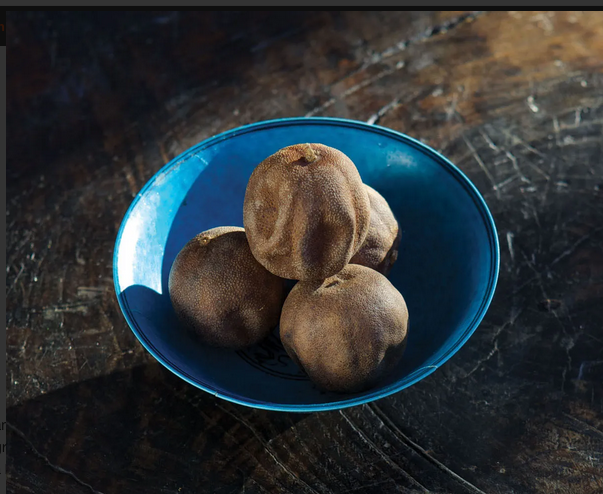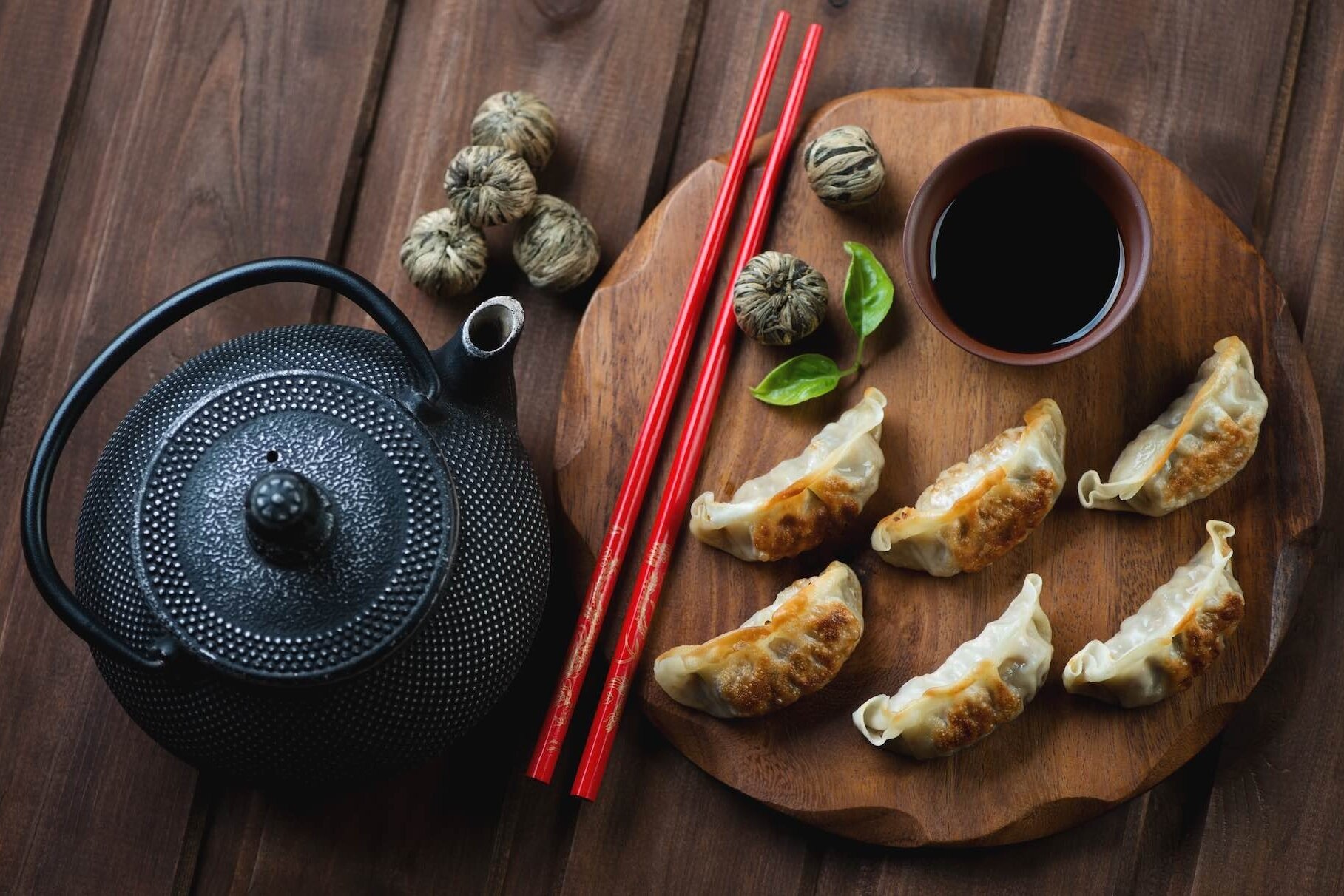Advertisement
Najmieh's Persian Pantry
16 March 2021 · Regional cooking · Ingredients

Nowruz begins on Saturday March 20. Celebrate Persian New Year with a feast, guided by “the grande dame of Persian cooking,” Najmieh Batmanglij, using the ingredients in her Persian pantry.
Persian cooking is noted for its subtlety of flavors, its artful use of spices and abundance of herbs, and its fine balance of sweet and savory flavors. Skillful cooks blend fruits and nuts with meat and vegetables, and ensure that the resulting dishes are a feast for the senses – the nose and eyes, as well as the palate.
If you grew up in the US and have cooked Persian food at home, there’s a good chance that you have Najmieh Batmanglij to thank for that. The Tehran-born food writer and all-round ambassador for Persian food and culture has led the way in introducing English-speaking audiences – particularly in North America – to the joys and possibilities of Persian cooking.
She wrote her groundbreaking first book, Food of Life, in 1986, not long after she emigrated to the US in 1983. She wrote the book partly to record and remember the family food of her former life in Iran, and partly to make sure that her sons, and other children of the post-Revolutionary Persian diaspora, could become familiar with the cuisine of their ancestors.
“The kitchen is a metaphor for life”
For Najmieh, cooking is not merely about getting food on the table. In her book Joon, She writes: “Like the 13th-century Persian poet Rumi, I consider the kitchen a metaphor for life: Cooking at home not only nourishes your body but also helps you gain discipline and confidence in everything else that you do.”
If that sounds daunting, it needn’t be. Najmieh’s recipes do their very best to demystify Persian cooking. Her recipes are carefully written and explained, and easy to follow.
Ten ingredients for your Persian pantry
There is no great mystery to cooking Persian food, but having the right ingredients is the first step. These are ten recommended ingredients from Najmieh’s pantry that will give your cooking the scents and savors of Persian cooking.
Advieh spice mix
In Persian, “advieh” refers both to spice in general and to a spice mix that Iranians either make themselves or buy ready-made. Families tend to create their own combinations. This advieh recipe is mine.
Use it in Rice with Lentils and Peach Khoresh.
Barberries
These are the tart red fruit, high in malic and citric acids, of a bush now only used for ornamental hedges in the West. Barberries, usually too sour to be eaten raw (though as children we often enjoyed them as a tart snack), are little appreciated in the West: In Europe, they were once pickled or made into syrups, jam, or wine, and medieval Western recipes mention barberries.
Use them in Herb Kuku with Barberries and Caramelized Barberry + Carrot Polow.
Dried limes
Dried Persian limes (limu-omani, or “limes from Oman”) can be found in Iranian markets. They have a distinctive taste that is quite different from fresh lime. Dried lime powder (gard-e limu-omani), made from limes grown in California, is apt to be bitter because it contains ground seeds; I recommend using whole limes, but be sure to pierce them with the point of a knife in several places before adding them to the recipe.
Use them in Celery Khoresh and Lamb Shank Soup with Yellow Split Peas and Meat Paste.
Herbs (sabzi)
Buy your herbs and vegetables fresh as you need them. If you have the space in your garden, it’s wonderful to grow herbs and basic vegetables if you can. I always grow my own Persian basil (also called anise basil, O. basilicum ‘Licorice’) from seed, available at Iranian markets. Plant them as early as possible depending on your geographic region and they will supply you well into October.
Use them in Fresh Herb Khoresh and Fresh Herb Kuku.
Pistachios
Persians were known as pistachio eaters as far back as the sixth century BCE. For cooking, I use raw California-grown pistachio kernels, which are now widely available in supermarkets in the US. Some of my recipes call for slivered pistachios, which can be harder to find. You can buy them at Iranian markets or via the Internet (at Sadaf.com), however, or make your own by cutting the raw kernels lengthways.
Use them in Pistachio Cookies and Pistachio + Pomegranate Meatballs.
Pomegranates
I love pomegranates – everything about them. And I try to use them in any way I can. These days pomegranate arils are used more and more. For pomegranate juice, it’s best to make your own using the fresh fruit. If using bottled pomegranate juice, be sure to buy the pure kind, and not from concentrate. In my recipes, I also use pomegranate molasses and paste – the Sadaf brand of pomegranate molasses has a perfect balance of sweet and sour.
Try them in Pomegranate Soup and Pomegranate and Walnut Khoresh.
Rose
Rose petals and rose water have been part of Persian cooking since ancient times, used in savory as well as sweet dishes. These days, they are used mostly in sweet pastries, though in some villages in Iran they are still incorporated in savory dishes. I love to use them in all of my cooking. Buy the dried petals (don’t use buds) and crush them in your hand as you sprinkle them in a recipe.
Use them in Yogurt + Cucumber Salad and Sweet + Savory Turnovers.
Saffron
Saffron is made from the dried orange stigmas of the saffron crocus. When buying the spice, choose threads rather than powder. Saffron threads need to be ground before using. Using a mortar and pestle or a spice grinder, grind the threads into a powder with 1 sugar cube (the sugar absorbs the moisture and helps the grinding process).
Use it in Fava + Dill Polow and Saffron Steamed Rice.
Sumac
Sumac has a distinctive lemony taste. The berry clusters are harvested in September, hung to dry, then ground. The powdered form is used as a condiment, mostly on kababs, but also in soups and on meatballs.
Use it in Sumac Grilled Fish and Grilled Corn on the Cob + Sumac Sauce.
Turmeric
Turmeric comes from the rhizomes of a plant in the ginger family, a native of Southeast Asia that is now grown throughout the world in countries with a tropical climate. Although fresh turmeric is sometimes available, it is hard to find. Ready-ground turmeric makes a perfectly good alternative, however.
Use it in Lime + Turmeric Roast Chicken and Eggplant Khoresh.
Related Posts
Advertisement







